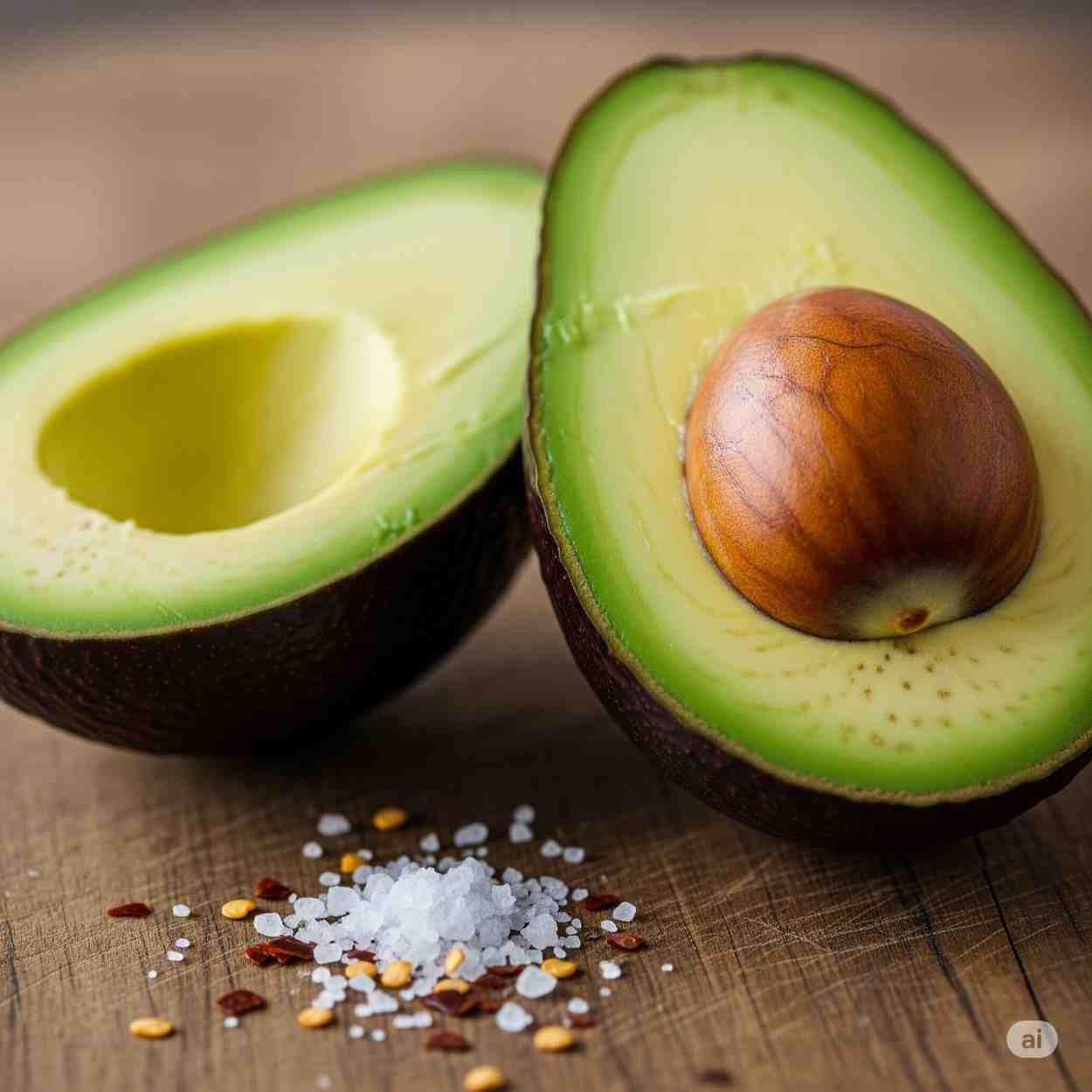
All About Avocado-The Fascinating Origins of Avocado
The avocado, scientifically known as Persea americana, has a rich history that dates back thousands of years. Native to Mesoamerica, particularly the regions now known as Mexico and Central America, this fruit was initially cultivated by ancient civilizations such as the Aztecs and the Mayans. The historical records indicate that the avocado was an essential part of these cultures’ diets, not only because of its nutritional value but also due to its unique properties. The Aztecs referred to avocados as “ahuacatl,” which also means “testicle,” likely due to the fruit’s shape, symbolizing fertility.
Archaeological findings suggest that avocados were being consumed as early as 5000 B.C., signifying their long-standing importance to human nutrition. The fruit was often used in various dishes, and its creamy texture made it a favored ingredient in ancient preparations. Avocados were also associated with fertility and were sometimes included in rituals and ceremonies, highlighting their cultural significance beyond mere sustenance.
As the centuries progressed, the popularity of avocados spread beyond Mesoamerica. Spanish explorers in the 16th century encountered avocados during their journeys and subsequently introduced the fruit to Europe and other parts of the world. By the 19th century, avocados had made their way to places such as California and Florida, where the favorable climate allowed for commercial cultivation. Over time, the versatility of avocados led to their incorporation into various culinary traditions globally. Today, avocados are celebrated not only for their culinary applications but also for their health benefits, becoming a staple in modern diets.
Thus, the avocado’s journey from the lush landscapes of Mesoamerica to its current status as a trendy superfood highlights its enduring appeal and significance across cultures and eras.
Ideal Climate for Growing Avocados
Avocado trees are known for their specific climatic requirements that significantly influence their growth and fruit production. These trees thrive in warm, temperate to tropical climates, where temperatures ideally range between 60°F and 85°F (15°C to 29°C). It is essential to note that while avocado trees can tolerate brief periods of lower temperatures, they are susceptible to frost, which can cause severe damage to the foliage and hinder fruit development. Regions that experience consistently warm temperatures are typically more favorable for cultivating avocados.
Humidity also plays a crucial role in avocado cultivation. These trees prefer a relatively mild humidity level, ideally around 60% to 70%. High humidity can promote diseases such as root rot, while very low humidity may impede healthy growth. Consequently, careful monitoring of local weather patterns is vital for successful avocado farming.
Sunlight is another critical factor in optimizing avocado production. Avocado trees require full sun exposure for at least six hours a day to ensure robust growth and a plentiful yield. Insufficient sunlight can lead to poor fruit set and reduced growth rates. Additionally, the elevation can affect growth; avocados generally flourish at altitudes ranging from sea level up to about 8,000 feet (2,400 meters), but optimal altitude varies among species.
Soil type is equally important when growing avocados. These trees prefer well-draining soils rich in organic matter and slightly acidic pH levels between 6 and 7. Heavy clay soils can hinder root development, while overly sandy soils may not retain sufficient moisture. Therefore, understanding the local soil composition can guide growers in amending their fields to create the ideal environment for avocado cultivation.
Health Benefits of Avocados
Avocados have gained significant recognition for their remarkable health benefits, making them a popular choice in diets across various cultures. One of the key aspects of avocados is their rich nutrient profile. They are an excellent source of healthy fats, specifically monounsaturated fats, which are known to support heart health. These beneficial fats help reduce levels of bad cholesterol (LDL) while increasing good cholesterol (HDL), thereby lowering the risk of cardiovascular diseases.
In addition to healthy fats, avocados are packed with essential vitamins and minerals. They are rich in vitamins C, E, K, and several B vitamins, including folate. These nutrients contribute to various bodily functions, from promoting healthy skin to boosting the immune system. The high fiber content in avocados also plays a critical role in digestion and weight management. Fiber helps to promote satiety, which can aid in controlling appetite and reducing overall caloric intake.
Moreover, avocados are known to have anti-inflammatory properties. The presence of antioxidants, such as carotenoids, may assist in reducing inflammation in the body, potentially lowering the risk of chronic diseases. Consuming avocados may also support eye health due to their lutein and zeaxanthin content, which helps protect the eyes from damage caused by blue light and decreases the risk of age-related macular degeneration.
Furthermore, incorporating avocados into one’s diet is associated with improved nutrient absorption. The healthy fats in avocados enable the body to absorb fat-soluble vitamins and other nutrients more efficiently. Overall, the diverse health benefits of avocados make them a valuable addition to a balanced diet, promoting heart health, weight management, and overall wellness.
Potential Side Effects of Avocado Consumption
While avocados are celebrated for their numerous health benefits, it is essential to consider potential side effects associated with their consumption. One of the primary concerns is the caloric density of avocados. A single avocado can contain around 250 to 300 calories, depending on its size. For individuals on calorie-restricted diets or those looking to manage their weight, overconsumption of avocados may contribute to an imbalance in total caloric intake. Moderation is key when incorporating this nutritious fruit into a diet.
Another consideration for some individuals is the possibility of allergic reactions. Although rare, some people may be allergic to avocados. Symptoms can range from mild oral allergy syndrome, characterized by itching and swelling in the mouth and throat, to more severe reactions involving gastrointestinal distress or even anaphylaxis. It is important for individuals with known fruit allergies to consult with a healthcare professional before introducing avocados into their diet.
Furthermore, individuals with certain medical conditions should approach avocado consumption with caution. Those who have latex allergies may experience cross-reactivity with avocados, leading to allergic symptoms. Additionally, people with kidney issues may need to be mindful of avocado consumption, as avocados are relatively high in potassium, which can be problematic for individuals on potassium-restricted diets. Moreover, while the fat content in avocados is largely healthy monounsaturated fat, excessive intake can lead to unwanted weight gain and may exacerbate lipid-related health issues in sensitive individuals.
In conclusion, while avocados offer numerous nutritional benefits, awareness of their potential side effects is crucial. By understanding these considerations, individuals can make informed decisions about incorporating avocados into their diets responsibly.
How to Properly Prepare and Eat Avocados
Selecting the perfect avocado is crucial for optimal flavor and texture. When shopping for avocados, look for fruits that yield slightly to pressure, indicating ripeness. A ripe avocado will be dark green to nearly black in color, depending on the variety. If you encounter avocados that feel hard, select them for future use to allow them time to ripen at home. To expedite this process, place the avocado in a paper bag with an apple or banana; the ethylene gas emitted by these fruits accelerates ripening.
Once ripe, store avocados in the refrigerator if you are not planning to consume them immediately. This slows the ripening process and extends their freshness. If you have cut an avocado but cannot finish it, squeeze some lemon or lime juice on the exposed flesh to mitigate browning, and cover it tightly with plastic wrap. It can generally last an additional day or two.
Preparing avocados for consumption requires a few straightforward steps. Start by cutting the avocado in half lengthwise and gently twisting to separate the two halves. Remove the pit using a spoon or carefully tapping a knife into the pit and twisting. To slice or dice, make a grid pattern on the flesh without cutting through the skin and then scoop the cubes out with a spoon for easy serving. This technique preserves the creamy texture while providing visually appealing pieces.
Avocados can be enjoyed in a variety of ways, such as spreading on toast, adding to salads for an extra nutrient boost, or blending into smoothies for added creaminess. They also serve as a fantastic base for guacamole—just mash ripe flesh with lime juice, salt, and your preferred seasonings. By following these simple selection, storage, and preparation methods, you can fully appreciate avocados’ rich flavor and health benefits.
Delicious Avocado Recipes to Try
Avocados are not only versatile but also rich in flavor and nutrients, making them a perfect ingredient for various dishes. Incorporating avocados into meals can lead to delightful culinary experiences. Here are some delectable avocado recipes that are sure to inspire your next dining session.
One of the classic ways to enjoy avocados is through guacamole. To prepare this timeless dip, mash ripe avocados and combine them with fresh lime juice, diced tomatoes, finely chopped cilantro, and minced garlic. Season with salt to taste, and serve it with tortilla chips or use it as a topping for tacos. This recipe highlights the creamy texture and rich taste of avocados, making it a favorite at gatherings.
For those seeking something light and refreshing, consider an avocado salad. Simply chop fresh vegetables such as cucumbers, tomatoes, and red onions, and toss them with diced avocados. A drizzle of olive oil, a splash of balsamic vinegar, and freshly cracked black pepper will enhance the flavors. This salad not only looks appealing but also offers a combination of textures, from the crunchiness of the vegetables to the creaminess of the avocado.
Moreover, avocados can be used in smoothies for a nutritious boost. Blend ripe avocados with bananas, spinach, almond milk, and a touch of honey or maple syrup for a delightful green smoothie. This recipe not only makes for a creamy and satisfying drink but also packs in essential vitamins and healthy fats, perfect for starting the day or as a post-workout refreshment.
Incorporating avocados into meals can truly elevate your culinary creations. Whether you opt for traditional recipes like guacamole or experiment with innovative smoothies and salads, there are countless ways to enjoy this delicious fruit. Embrace the versatility of avocados and explore these recipes to enhance your home cooking experience.
Avocado in Different Cuisines Around the World
Avocados have established themselves as a versatile ingredient across multiple global cuisines, where their rich flavor and creamy texture enhance various dishes. In Mexican cuisine, for instance, avocados are best known for their crucial role in guacamole, a traditional dip made by mashing ripe avocados with lime juice, salt, and various spices. This preparation is often enjoyed with tortilla chips or used as a complement to tacos and other traditional fare. Additionally, fresh avocado slices can be found embellishing many Mexican dishes, contributing both taste and nutritional value.
In California, particularly among health-conscious eaters, avocados have become a staple in salads, sandwiches, and smoothies. The avocado toast trend that gained prominence in the late 2010s is a perfect example; this simple yet delightful dish typically features smashed avocado atop a slice of whole-grain bread, often garnished with ingredients such as poached eggs, tomatoes, or even seeds. This embodies not only a modern culinary shift but also the broader trend toward incorporating healthy fats into daily meals.
The Mediterranean region also showcases the versatility of avocados by incorporating them into various recipes and salads. In countries like Israel and Lebanon, avocados can be combined with fresh vegetables, herbs, and olive oil to create vibrant, nutritious salads. Furthermore, the creamy fruit is sometimes blended into dips and spreads, providing a butter-like richness without the addition of dairy. This reflects a growing admiration for plant-based ingredients that align with dietary preferences found throughout the Mediterranean basin.
Across the globe, avocados continue to inspire culinary creativity, reflecting both tradition and modern trends. Their appeal lies in their adaptability, enabling both classic and innovative dishes that cater to diverse tastes and preferences. As consumers grow increasingly aware of the health benefits associated with avocados, it is likely that their popularity in international cuisines will continue to rise.
Sustainable Avocado Farming Practices
As the popularity of avocados continues to surge, it is imperative to consider the sustainability of avocado farming practices. The rapid expansion of avocado production has raised significant environmental concerns, particularly regarding water usage and habitat destruction. Avocado trees require a substantial amount of water, making their farming a challenging endeavor in regions already suffering from water scarcity. Consequently, the excessive water demands of avocado orchards can lead to depletion of local water sources, adversely impacting both ecosystems and communities.
To address these sustainability issues, various best practices have emerged within the avocado industry. These practices include the implementation of efficient irrigation systems, such as drip irrigation, which minimizes water waste by delivering moisture directly to the plant roots. Additionally, crop rotation and intercropping methods help maintain soil health and reduce the need for chemical fertilizers and pesticides. Employing these methods not only supports the health of the avocado trees but also fosters a more resilient agricultural ecosystem.
Moreover, responsible consumers play a vital role in promoting sustainable avocado farming. Opting for avocados certified by reputable sustainability labels, such as Fair Trade or Rainforest Alliance, can encourage growers to adopt environmentally friendly practices. By choosing to support these certified products, consumers are effectively contributing to a broader movement aimed at preserving natural resources and ensuring fair labor practices within the industry.
In conclusion, the sustainability of avocado farming hinges on the collective efforts of both producers and consumers. By adopting best farming practices and making informed choices, we can mitigate the environmental impact of avocado agriculture while still enjoying its numerous benefits. Promoting a sustainable approach not only helps protect our planet but also ensures the availability of avocados for future generations.
Conclusion: Embracing Avocados in Your Diet
Avocados have emerged as a staple in contemporary diets due to their myriad of health benefits and culinary versatility. As discussed throughout this article, these nutrient-dense fruits are packed with essential vitamins, minerals, and healthy fats that contribute positively to overall health. Their rich content of monounsaturated fats, fiber, and antioxidants can support heart health, aid in weight management, and improve nutrient absorption from other foods. The roles of avocados as a source of folate, potassium, and vitamins C and E further highlight their status as a superfood.
The versatility of avocados in culinary applications cannot be overstated. From guacamole to smoothies, salads, and even baked goods, this fruit brings a creamy texture and a unique flavor profile that can enhance both savory and sweet dishes. The ability to blend avocados into various recipes allows for innovative meal choices that sustain nutritional needs while satisfying taste buds.
As consumers, it is vital to make informed choices regarding avocado consumption, considering factors such as sourcing, sustainability, and personal dietary needs. Incorporating avocados into your meals not only promotes individual health but also supports sustainable agriculture practices when sourced responsibly. The growing popularity of avocados presents an opportunity for increased awareness and advocacy around sustainable farming methods and ethical consumption.
Incorporating avocados into your daily diet can be a simple yet effective step toward a healthier lifestyle. By diversifying the ways in which these fruits are included in your meals, you can enjoy a variety of delicious, nutrient-rich dishes. Ultimately, embracing the culinary possibilities of avocados can enhance both your diet and your enjoyment of food.Read more articles here










